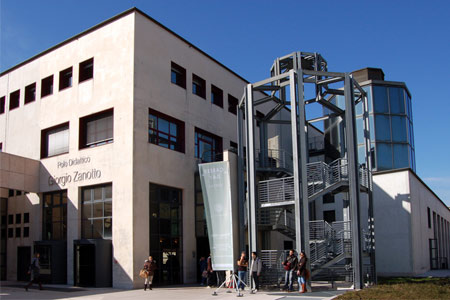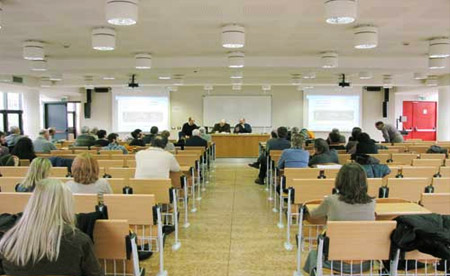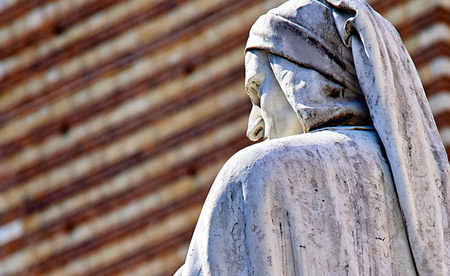Syllabus
I part: Magic Realism: history and critic of painting between Italy and Germany in the Twenties
I semester, I semestrino;
II part: Profiles of History of art critic
II semester, II semestrino
In the first part of the course the following topics will be proposed:
Situation of the art critic between 10s and 20s of XXI century
The crisis of artistic Avantgardes
The so-called “ritorno all’ordine”
Magic Realism sources
Definition of Magic Realism: from Bontempelli to Carrà and De Chirico
Definition of New Objectivity: Hartlaub and Roh
Characteristics of the German Neue Sachlichkeit painting
Characteristics of the Italian Magic Realism painting
Critical debate on Novecento: from Sarfatti to Ojetti
Crisis of Magic Realism
In the second part of the course the following topics will be proposed:
Vienna School of Art History
Development of decorative arts studies
The method of “pure visibility”
The theory of “modern taste”
The attribution method
The iconographic/iconological method
The Social Art History
The structuralist method
Methods of artistic/historic surveys in the last ten years
The course will be based on lectures that in the second part will be assisted by seminaries through the reading and commenting of texts arranged at the beginning of the course (total extra hours: 12).
At the end of the first part there will be a deeply tour of the exhibition “Realismo Magico. L’incanto del quotidiano nella pittura italiana degli anni Venti e Trenta” at MaRT, Rovereto.
RECOMMENDED BIBLIOGRAPHY:
I part:
P. Fossati, "Valori Plastici", 1918-1922, Torino, Einaudi, 1981
M. Bontempelli, Realismo magico e altri scritti sull'arte, a cura di E. Pontiggia, serie “Carte d'artisti”, 78, Abscondita, Milano 2006
Realismo Magico. Pittura e scultura in Italia 1919-1925, catalogo della mostra a cura di M. Fagiolo dell'Arco, Verona, galleria dello Scudo, Mazzotta, Milano 1988
V. Terraroli, L'età dell'innocenza. Uno “sguardo incantato” come sentiero di confine tra realtà e sogno, in Henri Rousseau. Il candore arcaico, a cura di G. Belli e G. Cogeval, catalogo della mostra (Venezia, Palazzo Ducale /Paris, Musée d'Orsay), Milano, Sole24Ore Cultura, 2015, pp. 33-43
La Nuova Oggettività tedesca, a cura di E. Pontiggia, Abscondita, Carte d'artisti 30, Milano 2002
F. Roh, Nach-Expressionismus. Magischer Realismus. Probleme der neuesten europäischen Malerei, Leipzig 1925, trad. F. Roh, Post-Espressionismo Realismo magico. Problemi della nuova pittura europea, trad. a cura di S. Cecchini, Liguori Editore, Napoli 2007
V. Terraroli, Realismo Magico, in Realismo magico. L'incanto dle quotidiano nella pittura italiana degli anni Venti e Trenta, catalogo della mostra a cura di V. Terraroli e G. Belli, MaRT di Rovereto, Electa, Milano 2017
II part:
G. C. Sciolla, La critica d’arte del Novecento, Torino, UTET, 1995
La storia delle storie dell'arte, a cura di O. Rossi Pinelli, Einaudi, Torino 2014
V. Terraroli, Arti decorative e decorazione, in L’Arte del XX secolo. La cultura artistica tra le due guerre:1920-1945, vol. III, Milano 2007, ed. Skira, pp. 297-305;
V. Terraroli, Appunti sul dibattito del ruolo delle arti decorative negli anni Venti in Italia: da Ojetti a Papini, da Conti a D’Annunzio, da Sarfatti a Ponti, in L’arte nella storia. Contributi di critica e storia dell’arte per Gianni Carlo Sciolla, a cura di V. Terraroli, F. Varallo, L. De Fanti, Milano 2000, ed. Skira, pp. 131-140
RESEARCH TEXTS:
Alois Riegl, Problemi di stile (Stilfragen, Berlino 1893), Feltrinelli, Milano 1963, pp. 43-92
Aby Warburg, Botticelli (Sandro Botticellis 'Geburt der Venus' und 'Frühling'. Eine Untersuchung über die Vorstellungen von der Antike in der Italienischen Frührenaissance, 1893), Abscondita, Milano 2003, pp. 15-44, figg. 1-8
Heinrich Wölfflin, Concetti fondamentali della storia dell’arte (Kunstgeschichtliche grundbegriffe, Monaco 1915), Tea, Milano 1994, pp. 23-168
Henri Focillon, Vita delle forme (Vie des formes, 1934), Einaudi, Torino 2002, pp. 3-27
Erwin Panofky, Iconografia e iconologia. Introduzione allo studio dell’arte del Rinascimento (1939), in Id., Il significato nelle arti visive, Einaudi, Torino 1999, pp. 31-57
Arnold Hauser, Storia sociale dell’arte, Volume secondo. Rococò Neoclassicismo Romanticismo Arte moderna e contemporanea (The social history of art, 1951), Einaudi, Torino 1956, pp. 19-51
Carlo Ludovico Ragghianti, Arti della visione. III Il linguaggio artistico, Einaudi, Torino 1952, pp. 230-239, 295-352
Fritz Saxl, La storia delle immagini (Lectures, Londra 1957), Laterza, Roma-Bari 2000, pp. 135-150, 243-256
Ernst H. Gombrich, Antichi maestri, nuove letture. Studi sull’arte del Rinascimento (New Light on Old Masters, Oxford 1986), Einaudi, Torino 2000, pp. 159-186
Michael Baxandall, Forme dell’intenzione. Sulla spiegazione storica delle opere d’arte (Patterns of Intention, Yale 1985), Eunaudi, Torino 2000, pp. 111-199
Henry Thode, Francesco d’Assisi e le origini dell’arte del Rinascimento in Italia (Franz von Assisi und der Anfang der Kunst der Renaissance in Italien, 1885), Donzelli editore, 2003, pp. 69-156
Frederick Antal, La pittura italiana tra classicismo e manierismo, Editori Riuniti, 1977, pp. 21-58
Further bibliographical information will be given during the lecturs.







